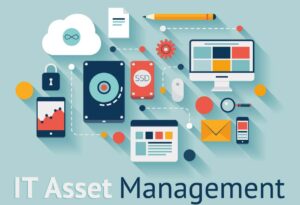Could you provide a description of an erection pump
Could you provide a description of an erection pump? Learn more about men’s health and the use of erection pumps by visiting this informative website:

IT Asset Management (ITAM) is a way to keep track of all your IT stuff, like computers and software. It helps figure out how much they cost, how they’re used, and if they’re causing any problems. This helps with buying new tech, fixing old tech, and other important decisions.
Conclusion : IT Asset Management software helps organizations keep an eye on their tech stuff, saves money, and makes things work better. It’s like having a helper for your computers and software. When you use it well, it can make your business better. It’s all about having the right info without working too hard to get it.
For More Blogs Like This Click Here..
Could you provide a description of an erection pump? Learn more about men’s health and the use of erection pumps by visiting this informative website:
There are five primary reasons for the development of heart failure. the healthy man blog to learn more about the main causes of impotence and
Does erectile dysfunction hinder the ability to masturbate? Certainly! Here’s a phrase that describes the main point of the article: “Discover the truth about erectile

IT Asset Management IT Asset Management – What Is It? IT Asset Management (ITAM) is a way to keep track of all your IT stuff,

Top 3 Ways to Optimize Procurement A study by Riskmethods found that 79% of companies experienced supply chain disruptions, resulting in a loss of 4%

Why is 3-Way Matching is Important in Purchasing? 3-way matching is an important process in purchasing to ensure accuracy, completeness, and compliance of invoices with

What is Indirect Procurement? 5 ThingsYou Need To Know What is Indirect Procurement? I talked about it with Procurement Expert Richard Beaumont on The Supply

RFI Vs RFP Vs RFQ In today’s business world, there are many options for enterprises looking to switch immigration providers. They consider factors like service,

5 Reasons Why eAuctions Drive Is Better Savings eAuctions are online discussions between a buyer and a group of sellers. Procurement specialists can use eAuctions

What is Category Management in Procurement? Category management is a way of organizing and managing similar products or services together. It helps organizations make their

17 common challenges in procurement management and their solutions Procurement can be complicated and challenging to manage due to various factors such as regulations and

The Ultimate Guide to the Top 16 Procurement KPIs. Nowadays, businesses want procurement teams to do more than just save money. They want them to

ProVen Revolutionary Procurement Software Revolutionary Procurement Software : Revolutionary procurement software is here! It’s advanced, flexible, easy to use, affordable, highly secure, and can be

ProVen The Next Generation Procurement & Vendor Management Solution – SRM Procurement Challenges: The current purchase process is both inefficient and lacks transparency. Floating RFQs

4 Benefits You Need To Keep In Mind While Choosing Right Salesforce Partner Salesforce is a strong stage that can assist organizations with smoothing out

6 Reasons To Hire Salesforce Developer For Your Business Is it safe to say that you are here since you need to find the reason

5 Major Benefits of Hiring a Salesforce Consultant What is the Market Share of Salesforce? Salesforce’s worldwide portion of the overall industry and income keeps

5 Ways to Effectively Manage Ideas on Salesforce Experience Cloud The thought creation process is an excursion with many exciting bends in the road. Thoughts

5 Salesforce Integrations That Can Transform Your Daily Business Operations If we discuss Salesforce, there are regions in which it adds to the business. From

Salesforce Marketing Cloud – 8 Ways to Maximize Your Marketing Potential In the present quick-moving advanced world, organizations should stay aware of the most recent

Sales Cloud Related 7 Key Features You Must Know What is Salesforce Sales Cloud? With the steadily expanding request, there is a consistent requirement for

4 Major Points How Salesforce Ensure Data Security and Privacy? Introduction These days information security and privacy is the main pressing issue for everybody and

6 Major Insights How Salesforce Implementation Can Improve Your Sales Process? Introduction Throughout the long term, Salesforce has been thought of as one of the

10 Leading CRM Software That Will Rule In 2023 Introduction Customer relationship management software is the core of any developing business these days as all

The 15 Types Of Clouds In Salesforce & Their Features Introduction Salesforce, as a comprehensive Customer Relationship Management (CRM) platform, offers a wide range of

5 Factors – Why Salesforce Is The Best And Desired CRM Solution? Introduction Salesforce has earned a reputation as one of the leading Customer Relationship

Major 6 Reasons Why Salesforce Is In So Much Demand These Days Introduction We have witnessed that Salesforce is in demand and got popularity in

6 reasons why Salesforce used AI in its CRM offerings. Introduction Salesforce, the market leader in Customer Relationship Management (CRM), has harnessed the power of Artificial Intelligence

Major 6 Future Outlook For Salesforce In The CRM Market? Introduction Salesforce has established itself as the dominant force in the Customer Relationship Management (CRM)

Top 6 Benefits Customer Will Get From The Salesforce AppExchange Introduction Salesforce’s AppExchange is an extensive marketplace of applications and integrations that provides customers with

Major 6 Industries are benefited the most from Salesforce’s CRM Solutions Introduction Salesforce’s Customer Relationship Management (CRM) solutions have proven to be valuable across a

6 Reasons Set Salesforce Apart From Other CRMs Introduction In a crowded market of Customer Relationship Management (CRM) providers, Salesforce has managed to carve out

Top 5 Reasons for Salesforce’s Market Leadership Market Share Of Salesforce Introduction Salesforce has emerged as the market leader in Customer Relationship Management (CRM), revolutionizing

Top 5 Reasons and The Journey Of Salesforce For Becoming The No 1 CRM Introduction In the highly competitive world of Customer Relationship Management (CRM),

How Is The Future On Salesforce? Introduction : In today’s fast-paced digital landscape, businesses are constantly striving to stay ahead of the competition and maximize

19 Major Benefits Of Using Salesforce CRM? Introduction: In today’s highly competitive business landscape, maintaining strong customer relationships is crucial for success. That’s where Salesforce,

What Exactly Does Salesforce Do? Introduction : Salesforce is a leading Customer Relationship Management (CRM) platform that offers a wide range of cloud-based services to
Epic Match: MI vs. SRH – T20 Titans’ War in the IPL 2023 In the T20 Indian Premier League (IPL), the Mumbai Indians (MI) and

6 Ways CRM Helps You Grow Your Business Customer Relationship Management (CRM) software can play a crucial role in helping businesses grow and thrive. Here are